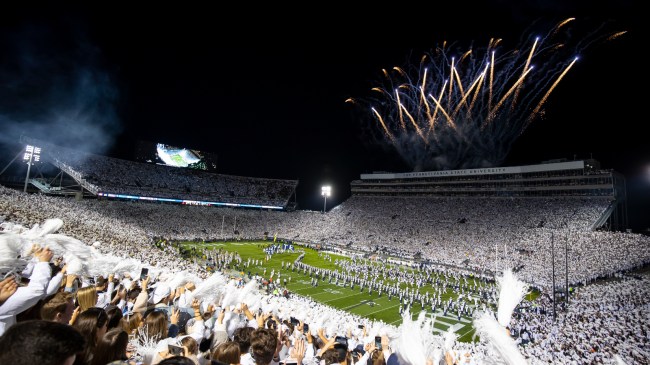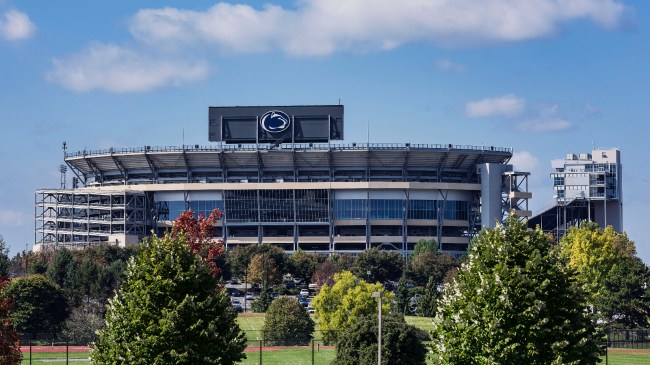
Getty Image

Audio By Carbonatix
Beaver Stadium on the campus of Penn State University is one of the most electric atmospheres in all of college football.
But as someone who has covered and attended numerous games at the venue, I can tell you that it badly needs a bit of upgrading.
Penn State, however, approved up to $700M of renovations on Tuesday while releasing a rendering that looks significantly worse than the current stadium.

Getty Image
The picture above shows the current exterior of Beaver Stadium from outside of the north end zone. While artist renderings of the new renovations are featured below.
Another rendering of the approved $700 million Beaver Stadium renovations, showcasing the proposed “welcome center” pic.twitter.com/DcpbHpMxQX
— Joel Haas (@Joel_Haas1) May 21, 2024
Here is an artist rendering of what #PennState’s Beaver Stadium will look like following the renovations. #WeAre x #PennState pic.twitter.com/wUVUGzvHTJ
— Happy Valley Insider (@PennStateRivals) May 21, 2024
It’s not that the renderings are necessarily bad. Without context, the rendering are actually pretty cool looking. The problem occures when you begin to apply context.
Beaver Stadium, as currently construced, opened in 1960 and has consistently been built upon. It sits next to State College, Pennsylvania, a small town in the rolling hills of Central Pennsyvlania that has a population of 40,501 fullt-time residents as of 2020.
The current stadium fits the town and the fan base.
The new rendering looks like any number of new modern stadiums you see across the NFL. It could easily be mistaken for Lucas Oil Stadium in Indianapolis, per se.
And that’s a problem.
Penn State Fans Aren’t Sold On Beaver Stadium Renovation Renderings
College football stadiums should feel old. They should feel historic. And they should fit the towns that they are built in.
Otherwise you completely lose the soul the stadium.
Cool, it’ll look like every other stadium. Who wants this other than people that attend one game a year? https://t.co/oSajjRXVe1
— Rick Monti (@Aldo_Monti) May 21, 2024
We could save a LOT of money by simply not doing this https://t.co/lCZ0yXNlfW
— Brett Larter (@BrettLarter) May 21, 2024
Maybe that’s just part and parcel of modern college athletics. It’s all about extracting the most value from fans.
But at what cost?
At what point does college football stray so far from its roots that it’s no longer recognizable as the game that fans fell in love with?
Sure, it’s just a stadium.
And maybe in 10 years nobody will even remember it changed.
But spending over half a billion dollars to make a stadium look worse is certainly a bold way to allocate funds.